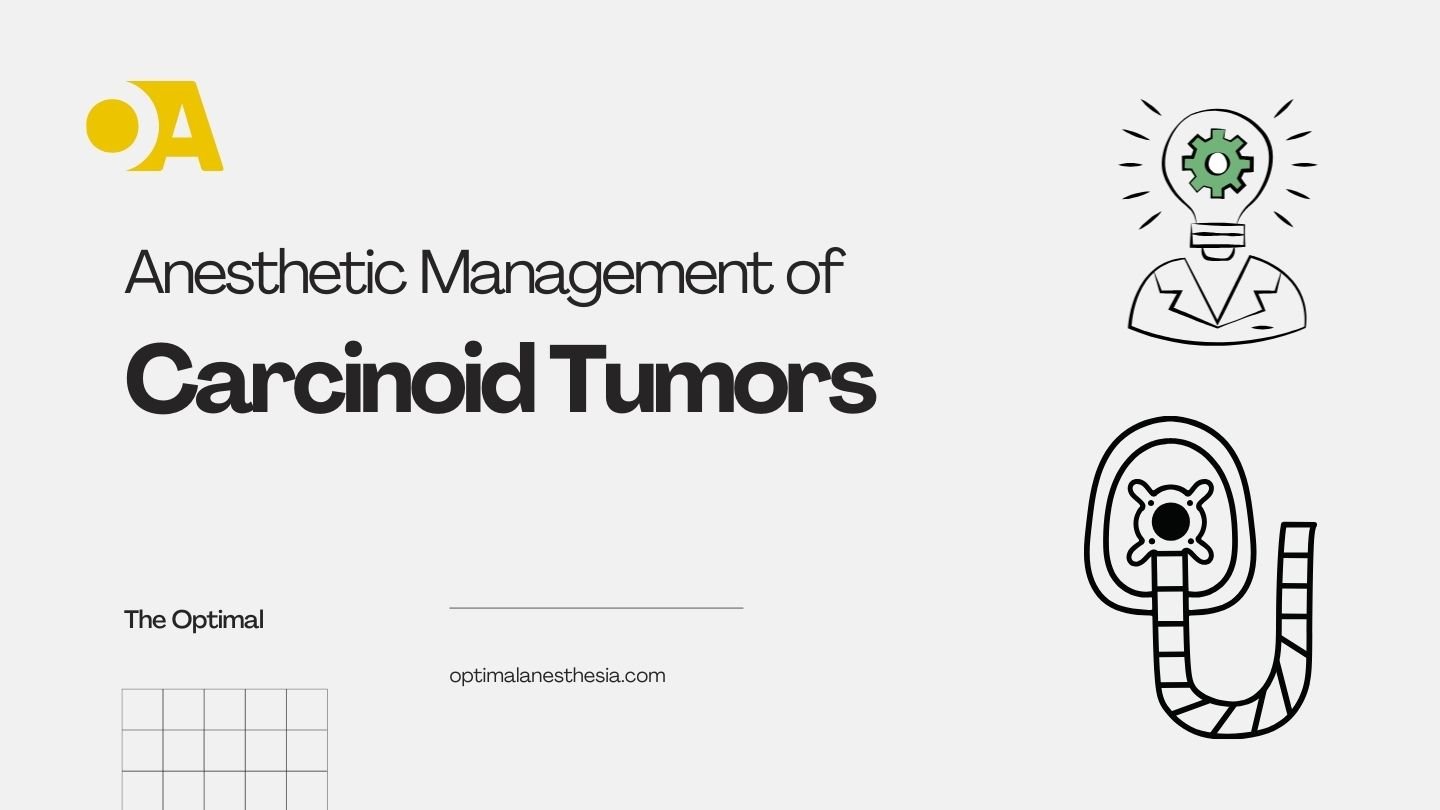Carcinoid syndrome (CS) is a paraneoplastic syndrome associated with neuroendocrine tumors, primarily originating from the gastrointestinal (GI) tract. The lungs are the most common site of origin outside the GI tract.
| Key Points | |
|---|---|
| Definition of Carcinoid Syndrome | Paraneoplastic syndrome linked to neuroendocrine tumors, often from the GI tract. |
| Primary Substance Released in CS | Serotonin plays a central role in Carcinoid Syndrome. |
| Common Symptoms of CS | Facial flushing, hypotension, tachycardia, diarrhea, bronchoconstriction, venous telangiectasia, dyspnea, fibrotic deposits, and Carcinoid Heart Disease (CHD). |
| Locations of Tumor Origin | Predominantly in the GI tract, but can also occur in the lungs and other rare sites. |
| Mainstay of Symptomatic Treatment for CS | Somatostatin analogs like octreotide and lanreotide. |
Pathophysiology of Carcinoid Syndrome
The pathophysiology involves the release of various substances, including serotonin and other mediators, leading to symptoms and complications.
| Pathophysiological Aspects | |
|---|---|
| Key Substances Associated with CS | Serotonin, histamine, kallikrein, prostaglandins, tachykinins, among others. |
| Carcinoid Heart Disease (CHD) | Characterized by plaque-like fibrous deposits affecting heart valves. |
| Common CHD Involvement | Right-sided CHD is most common due to effective inactivation of substances by lung vasculature. Left-sided involvement occurs in specific conditions. |
| Clinical Manifestations of CHD | Right-sided valvular lesions, tricuspid regurgitation, and left-sided heart involvement. |
| Life-Threatening Carcinoid Crisis | Can be triggered by tumor manipulation, chemical stimulation, hepatic artery procedures, or anesthesia induction. Symptoms include severe flushing, blood pressure changes, arrhythmias, bronchoconstriction, and mental status changes. |
Diagnosis and Tests
Various diagnostic methods are used to identify and assess Carcinoid Syndrome, including tests for serotonin and imaging techniques.
| Diagnostic Approaches | |
|---|---|
| Common Serotonin-Related Test | The 24-hour urinary 5-hydroxy indole acetic acid (HIAA) assay. |
| Other Imaging Techniques | Endoscopy, endoscopic ultrasound, video capsule endoscopy, CT scans, MRI, selective mesenteric angiography, barium small bowel radiography, abdominal ultrasound. |
| Additional Diagnostic Marker | Chromogranin A (CgA), a protein found in most neuroendocrine cells, is a general marker for carcinoid tumors. |
| Pentagastrin Challenge Test | Utilized alongside urinary 5-HIAA levels for diagnosis and treatment. |
| Role of Echocardiography | Essential in evaluating cardiac lesions, especially in patients with known CHD. |
Treatment and Management
Managing Carcinoid Syndrome involves treatment options like somatostatin analogs, along with strategies for Carcinoid Heart Disease (CHD), perioperative care, and anesthesia considerations.
| Treatment Modalities | |
|---|---|
| Somatostatin Analog Treatment | Octreotide and lanreotide are primary treatments for symptomatic relief, reducing hormone secretion. |
| Novel Treatment: Telotristat Ethyl | A promising option for reducing serotonin production and delaying CHD onset. |
| Surgical Intervention for CHD | Managing heart involvement may require heart valve repair surgery and treatments to control heart failure. |
| Anesthesia and Perioperative Management | Minimizing factors that trigger the release of bioactive mediators to avoid a carcinoid crisis during surgery. See detailed anesthesia considerations below. |
| Ongoing Postoperative Care | Monitoring post-surgery for tumor mediator release and managing potential symptoms. |
Anesthesia Considerations for Carcinoid Syndrome
Patients with Carcinoid Syndrome require special attention during anesthesia due to the risk of carcinoid crisis, triggered by various factors, including surgical manipulation and anesthesia induction. Here are key considerations:
Monitoring
- Invasive Monitoring: Rapid blood pressure changes are common. Consider invasive monitoring with an arterial catheter to closely track blood pressure, particularly before anesthesia induction.
- Cardiac Function: Patients with coexisting cardiac dysfunction may benefit from monitoring left ventricular function with a pulmonary artery catheter or transesophageal echocardiography.
Anesthetic Agents
- Induction: While various agents can be used for induction, propofol is often preferred as it suppresses the sympathetic response to intubation, reducing the risk of triggering a carcinoid crisis. Avoid succinylcholine due to the potential for triggering mediator release.
- Maintenance: A balanced technique incorporating positive pressure ventilation, inhalation agents, nondepolarizing neuromuscular blocking agents, and opioids, typically fentanyl, can be employed. Nitrous oxide is considered safe.
Perioperative Preparations
- Catecholamine Avoidance: Care should be taken to avoid factors that stimulate catecholamine release. Hypoxemia, hypercarbia, and light anesthesia should be minimized.
- Octreotide Infusion: An octreotide infusion may be required to prevent a carcinoid crisis and should continue for up to 48 hours post-surgery.
- Glucose Monitoring: Due to octreotide’s effect on hormones, including insulin, close glucose monitoring is essential.
Postoperative Care
- Delayed Recovery: Patients may have a delayed recovery from anesthesia. Continue preoperative drug therapy such as octreotide and reduce it slowly as needed.
- Analgesia: Intravenous opioids and regional anesthesia are often used for pain management.
- Monitoring for Symptoms: Patients should be closely monitored postoperatively for signs of tumor mediator release, especially if they have undetected metastases.


